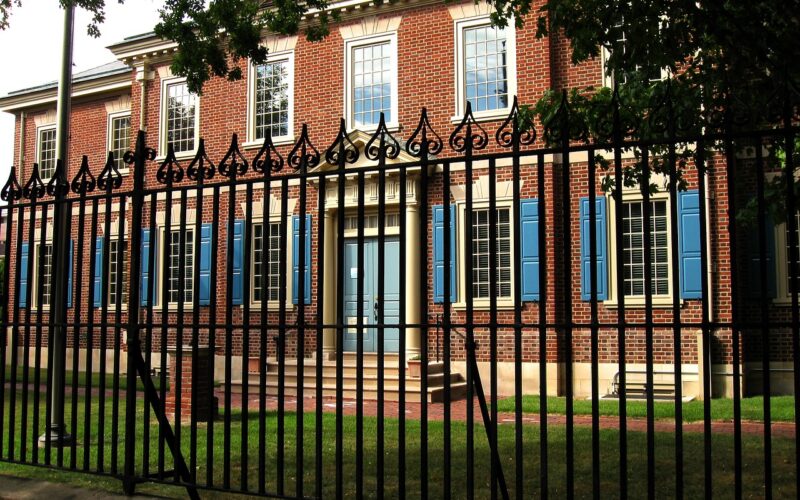The world is dotted with iconic private residences, each with a unique history and charm that beckons us to peer beyond their closed doors. These historic and culturally significant homes have witnessed centuries of change, and their stories are often intertwined with the broader narratives of nations and societies. In this article, we’ll take a journey through time and explore the rich histories of some of the world’s most iconic private residences.
The Biltmore Estate, USA
Location: Asheville, North Carolina
History: The Biltmore Estate is perhaps the most famous private residence in the United States. Built by George Washington Vanderbilt II between 1889 and 1895, this 250-room mansion was inspired by the grand chateaux of France’s Loire Valley. With its opulent architecture and stunning gardens designed by Frederick Law Olmsted, the Biltmore Estate is a testament to the Gilded Age’s excesses.
Significance: Today, the Biltmore Estate is open to the public and serves as a window into the life of America’s wealthiest families during the late 19th century. It showcases not only the lavish lifestyle of the Vanderbilts but also the art, architecture, and innovation of the era.
The Palace of Versailles, France
Location: Versailles, France
History: The Palace of Versailles began as a hunting lodge for King Louis XIII but was transformed into a grand palace by his son, Louis XIV, in the 17th century. The palace became the epicenter of political and cultural life in France, and its Hall of Mirrors witnessed the signing of the Treaty of Versailles in 1919, marking the end of World War I.
Significance: The Palace of Versailles is a symbol of absolute monarchy and the excesses of the French aristocracy. It played a pivotal role in French history and culture, and its opulent design and gardens continue to attract millions of visitors each year.
The Forbidden City, China
Location: Beijing, China
History: The Forbidden City, officially known as the Imperial Palace, was the Chinese imperial palace from the Ming Dynasty to the end of the Qing Dynasty (1420 to 1912). This vast complex of palaces, courtyards, and halls served as the political and ceremonial center of China for centuries.
Significance: The Forbidden City is a UNESCO World Heritage site and one of the most important cultural and architectural landmarks in China. It reflects the rich history and traditions of the Chinese imperial era and offers a glimpse into the lives of emperors and their courts.
Himeji Castle, Japan
Location: Himeji, Japan
History: Himeji Castle, often referred to as the “White Heron Castle” due to its brilliant white exterior, dates back to the 14th century. It underwent several expansions and renovations over the centuries, becoming a formidable fortress with intricate defensive features.
Significance: Himeji Castle is considered one of Japan’s greatest architectural treasures. Its pristine appearance and ingenious design, which includes a labyrinth of gates, walls, and moats, make it an exceptional example of Japanese castle architecture and a UNESCO World Heritage site.
Buckingham Palace, United Kingdom
Location: London, United Kingdom
History: Buckingham Palace became the official residence of the British monarch in 1837 during the reign of Queen Victoria. It has since served as the primary residence and administrative headquarters of the British royal family.
Significance: Buckingham Palace is not only a symbol of the British monarchy but also a focal point for national celebrations and events. The Changing of the Guard ceremony and the State Rooms, open to the public during the summer months, provide insights into the royal traditions and heritage of the United Kingdom.
The Alhambra, Spain
Location: Granada, Spain
History: The Alhambra is a stunning palace and fortress complex that dates back to the mid-13th century when it was built by the Nasrid Dynasty. It served as the residence of the Muslim rulers of the Emirate of Granada and later the Catholic Monarchs.
Significance: The Alhambra is a masterpiece of Islamic architecture and design. Its intricate tilework, exquisite gardens, and delicate stucco ornamentation are celebrated examples of Moorish art. Today, it stands as a testament to the multicultural history of Spain.
The Taj Mahal, India
Location: Agra, India
History: The Taj Mahal, often referred to as the “Crown of Palaces,” was built by the Mughal Emperor Shah Jahan in memory of his favorite wife, Mumtaz Mahal, who died during childbirth in 1631. Construction of this white marble mausoleum was completed in 1648.
Significance: The Taj Mahal is a UNESCO World Heritage site and one of the most recognizable and iconic monuments in the world. It is celebrated for its stunning architecture, intricate marble inlay work, and its enduring symbol of love and devotion.
Neuschwanstein Castle, Germany
Location: Bavaria, Germany
History: Neuschwanstein Castle was commissioned by King Ludwig II of Bavaria in the 19th century as a retreat and homage to the romanticism of the Middle Ages. Although it was never completed during Ludwig’s lifetime, it has since become one of the most famous castles in the world.
Significance: Neuschwanstein Castle is a masterpiece of fairy-tale architecture and has inspired countless works of art, including Disney’s Sleeping Beauty Castle. It offers breathtaking views of the Bavarian countryside and stands as a testament to Ludwig II’s eccentric vision.
Conclusion
These iconic private residences are more than just architectural marvels; they are windows into history, culture, and the human spirit. Each one tells a unique story of the people who lived within their walls and the societies they helped shape. As we explore these magnificent homes, we gain a deeper understanding of the diverse and rich tapestry of human civilization that spans the globe. Whether it’s the opulence of Versailles, the grace of the Taj Mahal, or the grandeur of Buckingham Palace, these residences continue to captivate our imaginations and remind us of the enduring power of architecture and history.
